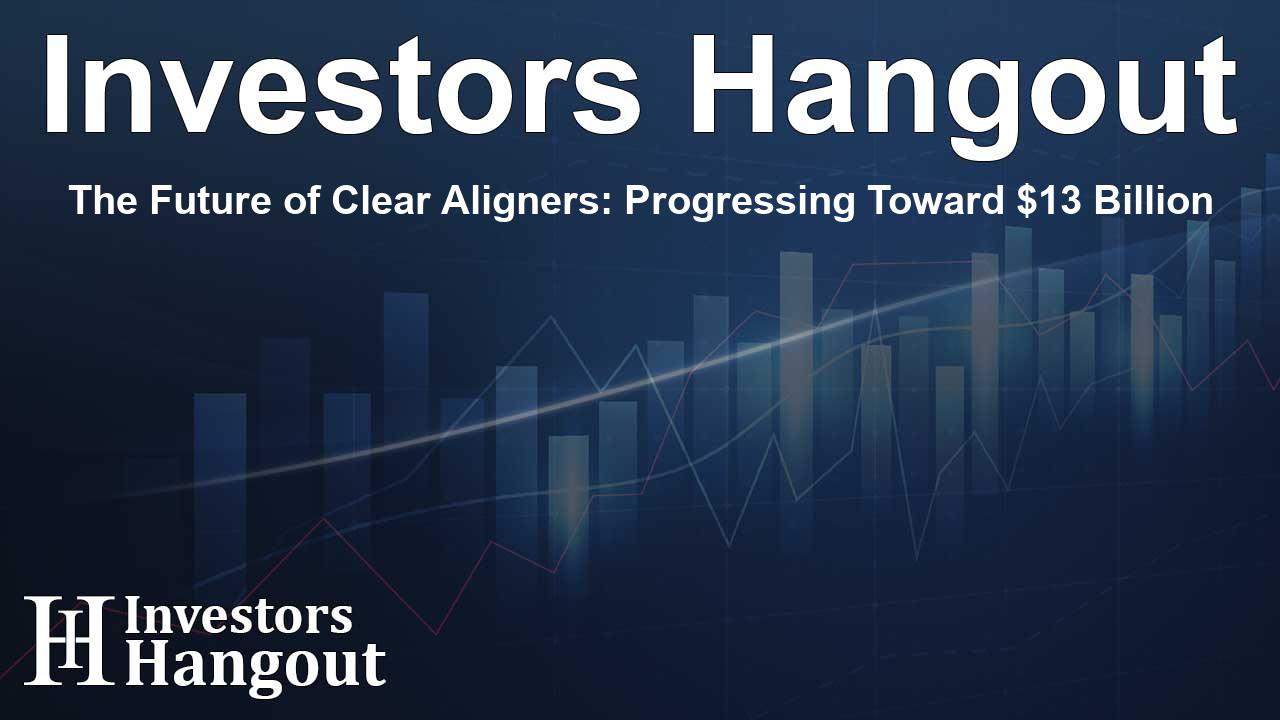The Future of Clear Aligners: Progressing Toward $13 Billion

The Future of Clear Aligners: Progressing Toward $13 Billion
The clear aligner market is on a remarkable trajectory, expected to soar from $5 billion to approximately $13.4 billion in the coming years, driven primarily by innovative technologies and increasing patient demand. This booming sector is part of a wider orthodontics industry projected to reach nearly $13 billion. Recent insights reveal how technological advancements, particularly in 3D printing, are transforming orthodontic care and making treatment more accessible.
Driving Forces Behind Market Growth
Several key factors are propelling the growth of the clear aligner market. First and foremost, advancements in 3D printing technology are revolutionizing how aligners are produced. Dentists and dental service organizations (DSOs) are increasingly turning to in-house 3D printing capabilities, resulting in faster manufacturing processes and cost savings. By using FDA-approved resins, practices can create custom aligners swiftly, significantly enhancing patient satisfaction due to shorter wait times.
In addition to 3D printing, the surge in early orthodontic interventions has expanded the market. Solutions such as pediatric aligners from established brands have captured the attention of families seeking preventive care during crucial jaw development stages. This early intervention is not only beneficial for dental health but also broadens the patient base as kids who previously might not have sought orthodontic care are introduced to aligners at a younger age.
The Role of DSOs and White-Label Partnerships
Dental service organizations are embracing white-label aligner programs, allowing them to offer tailored solutions without the burden of extensive manufacturing facilities. These partnerships enable dental groups to capitalize on existing patient relationships while providing affordable aligner options. This accessibility enhances treatment options for various demographics, including those in lower-income areas, fostering a significant shift in orthodontic care delivery.
Emerging Technologies Shape the Market
Technology continues to play a crucial role in shaping the clear aligner landscape. Innovations in materials, especially in alignment materials and 3D printing, have resulted in more effective and durable solutions. Furthermore, the integration of AI in treatment planning processes allows for more precise and customized patient care, streamlining treatment timelines and improving overall patient outcomes.
Key Insights and Market Trends
As we look closer at the current state of the clear aligner market, several trends are noteworthy. Clear aligners generate substantial revenue, outpacing traditional braces despite their smaller unit volume. This is largely due to their higher average selling prices, which are three times that of conventional braces. Meanwhile, retainers remain crucial for post-treatment care, reflecting the rising popularity of both aligners and braces globally.
Emerging markets, particularly in regions like Latin America and Southeast Asia, are adopting direct-to-consumer (DTC) models, bridging the gap between traditional orthodontics and modern, technology-driven solutions. These shifts ensure that more individuals have access to aesthetic treatments and care that meet their needs.
Taking Clear Aligners to the Next Level
The future of the clear aligner market is promising, with estimates indicating a projected value of over $13 billion within a few years. As production methods evolve and consumer expectations rise, the landscape will continue to adapt rapidly. Potential market entrants and original equipment manufacturers (OEMs) are also entering the scene, facilitating B2B growth and providing DSOs and dental groups with unique branding opportunities.
Frequently Asked Questions
What drives the growth of the clear aligner market?
The clear aligner market growth is driven by advancements in 3D printing technology, increased demand for early orthodontic intervention, and innovative DSO partnerships.
How do 3D printing innovations impact aligner production?
3D printing allows for faster, cost-effective production of custom aligners, thus improving patient satisfaction and reducing turnaround times.
Why are pediatric aligners gaining popularity?
Pediatric aligners address orthodontic issues early, preventing more complex treatments later in life and thus expanding the potential patient base.
What role do DSOs play in the clear aligner market?
DSOs enhance access to orthodontic solutions by offering white-label aligner programs, allowing them to reach a broader audience without manufacturing resources.
What trends are shaping the future of orthodontic care?
Key trends include the rise of clear aligners over traditional options due to higher revenue potential, innovative technology advancements, and the development of DTC models in emerging markets.
About The Author
Contact Dylan Bailey privately here. Or send an email with ATTN: Dylan Bailey as the subject to contact@investorshangout.com.
About Investors Hangout
Investors Hangout is a leading online stock forum for financial discussion and learning, offering a wide range of free tools and resources. It draws in traders of all levels, who exchange market knowledge, investigate trading tactics, and keep an eye on industry developments in real time. Featuring financial articles, stock message boards, quotes, charts, company profiles, and live news updates. Through cooperative learning and a wealth of informational resources, it helps users from novices creating their first portfolios to experts honing their techniques. Join Investors Hangout today: https://investorshangout.com/
The content of this article is based on factual, publicly available information and does not represent legal, financial, or investment advice. Investors Hangout does not offer financial advice, and the author is not a licensed financial advisor. Consult a qualified advisor before making any financial or investment decisions based on this article. This article should not be considered advice to purchase, sell, or hold any securities or other investments. If any of the material provided here is inaccurate, please contact us for corrections.
